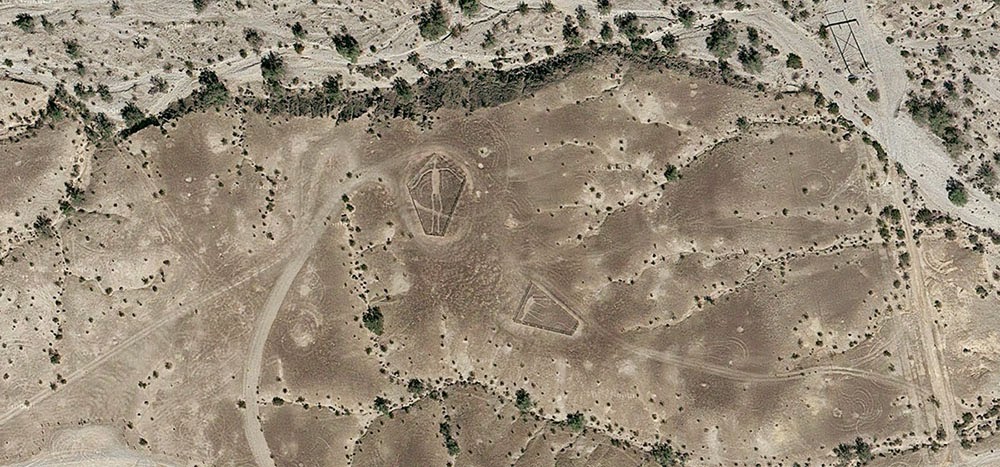 [Image: The “Blythe Intaglios,” via Google Maps].
[Image: The “Blythe Intaglios,” via Google Maps].
After reading an article about the “Blythe geoglyphs”—huge, 1,000-year old images carved into the California desert north of Blythe, near the border with Arizona—I got to looking around on Google Maps more or less at random and found what looked like a ghost town in the middle of nowhere, close to an old mine.
Turns out, it was the abandoned industrial settlement of Midland, California—and it’s been empty for nearly half a century, deliberately burned to the ground in 1966 when the nearby mine was closed.
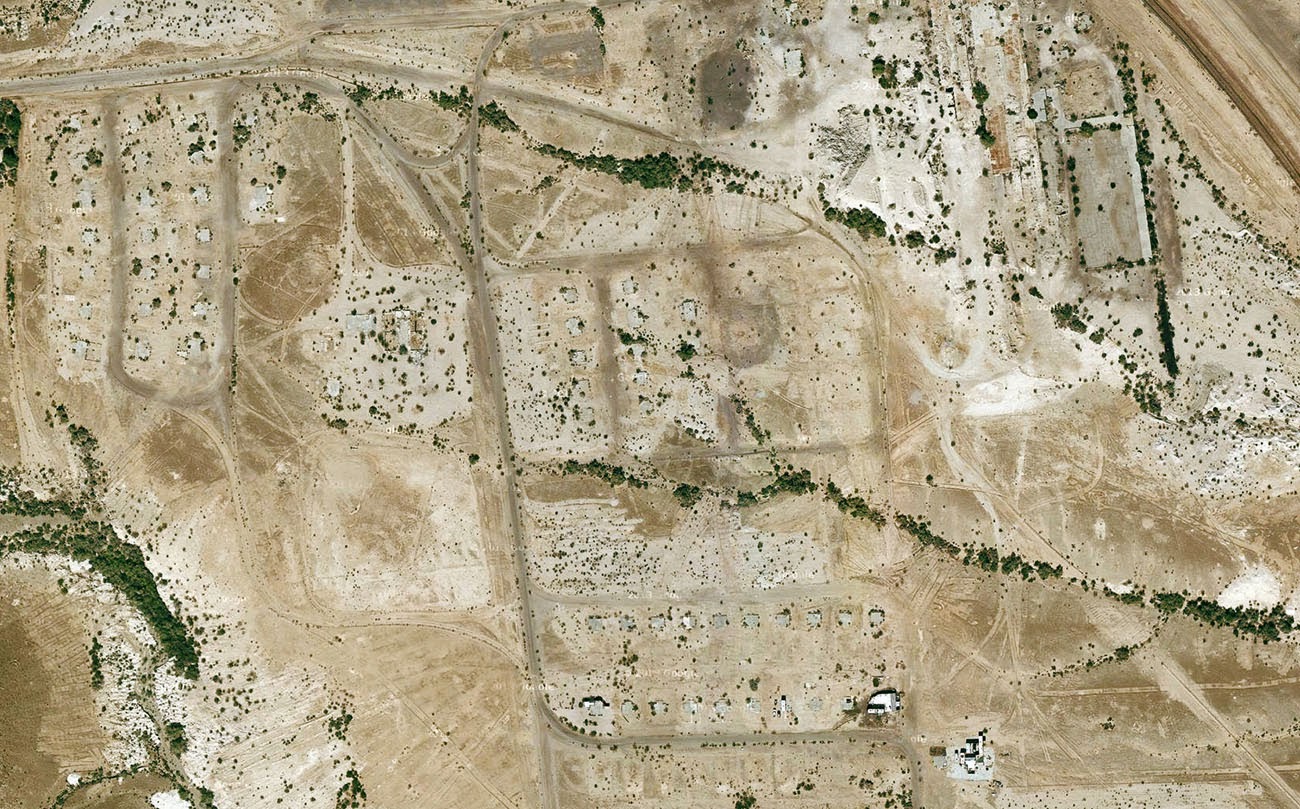 [Image: Midland, California, via Google Maps].
[Image: Midland, California, via Google Maps].
What’s so interesting about this place—aside from the exposed concrete foundation pads now reused as platforms for RVs, or the empty streets forming an altogether different kind of geoglyph, or even the obvious ease with which one can get there, simply following the aptly named Midland Road northeast from Blythe—is the fact that the town was built for workers at the gypsum mine, and that the gypsum extracted from the ground in Midland was then used as artificial snow in many Hollywood productions.
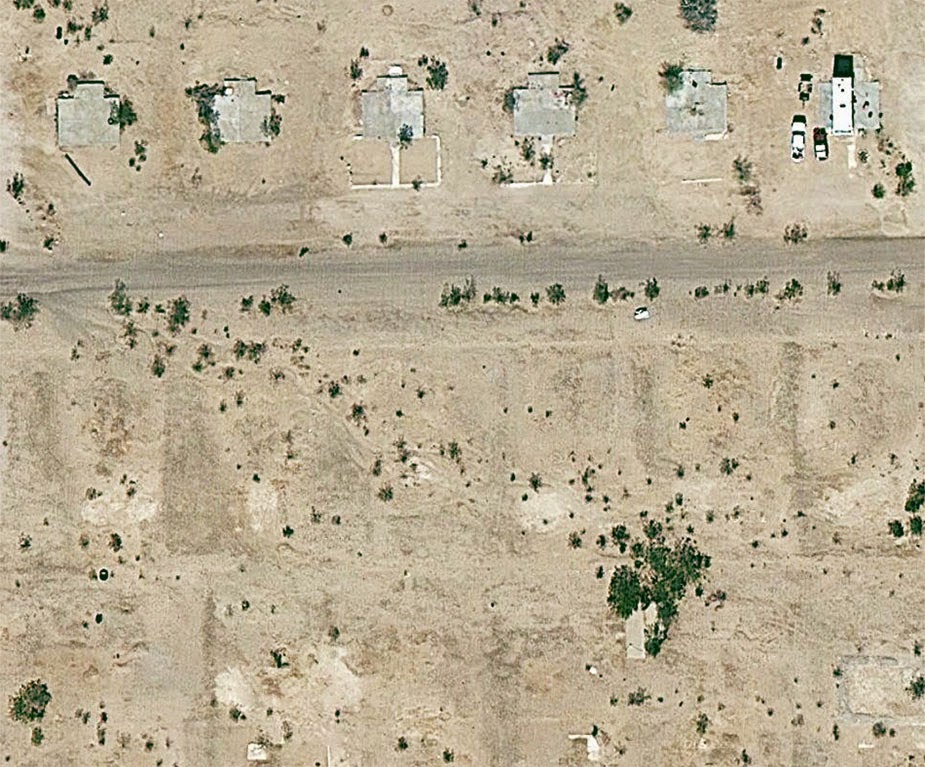 [Image: Midland, California, via Google Maps].
[Image: Midland, California, via Google Maps].
As the L.A. Times reported back in 1970—warning its readers, “Don’t Go To Midland—It’s Gone”—the town served as the mineral origin for Hollywood’s simulated weather effects.
“Midland was started in 1925 as a tent city,” the paper explained, “with miners in the middle of the Mojave Desert digging gypsum out of the Little Marias to meet the demands of movie studios. All the winter scenes during the golden age of Hollywood were filmed with ‘snowflakes’ from Midland.”
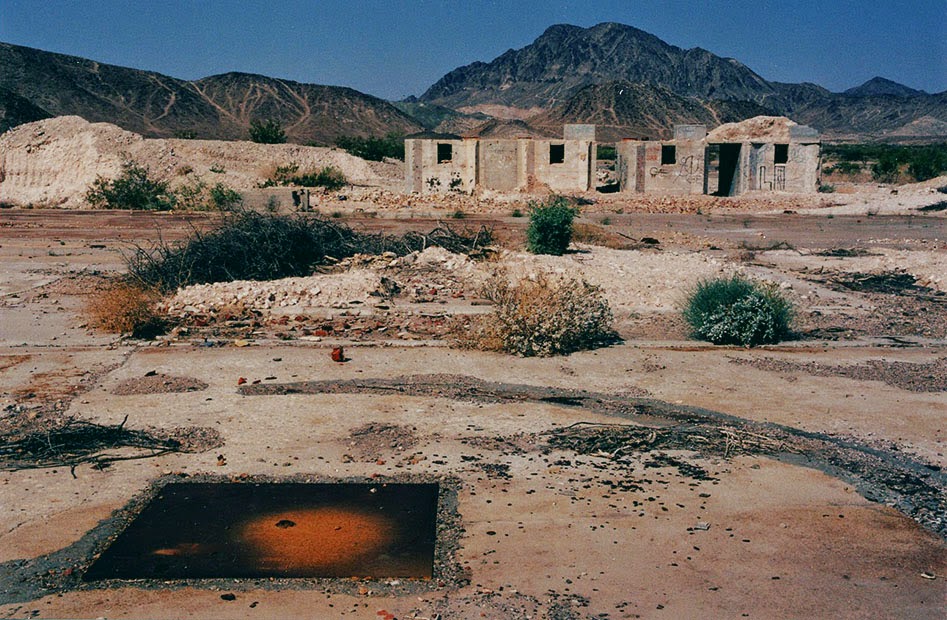 [Image: The abandoned streets of Midland, former origin of Hollywood’s artificial snow; photo via CLUI].
[Image: The abandoned streets of Midland, former origin of Hollywood’s artificial snow; photo via CLUI].
Like some strange, artificial winter being mined from the earth and scattered all over the dreams of cinemagoers around the world, Midland’s mineral snow had all the right qualities without any of the perishability or cold.
See, for example, this patent for artificial snow, filed in 1927 and approved in 1930, in which it is explained how gypsum can be dissolved by a specific acid mix to produce light, fluffy flakes perfect for the purposes of winter simulation. Easy to produce, with no risk of melting.
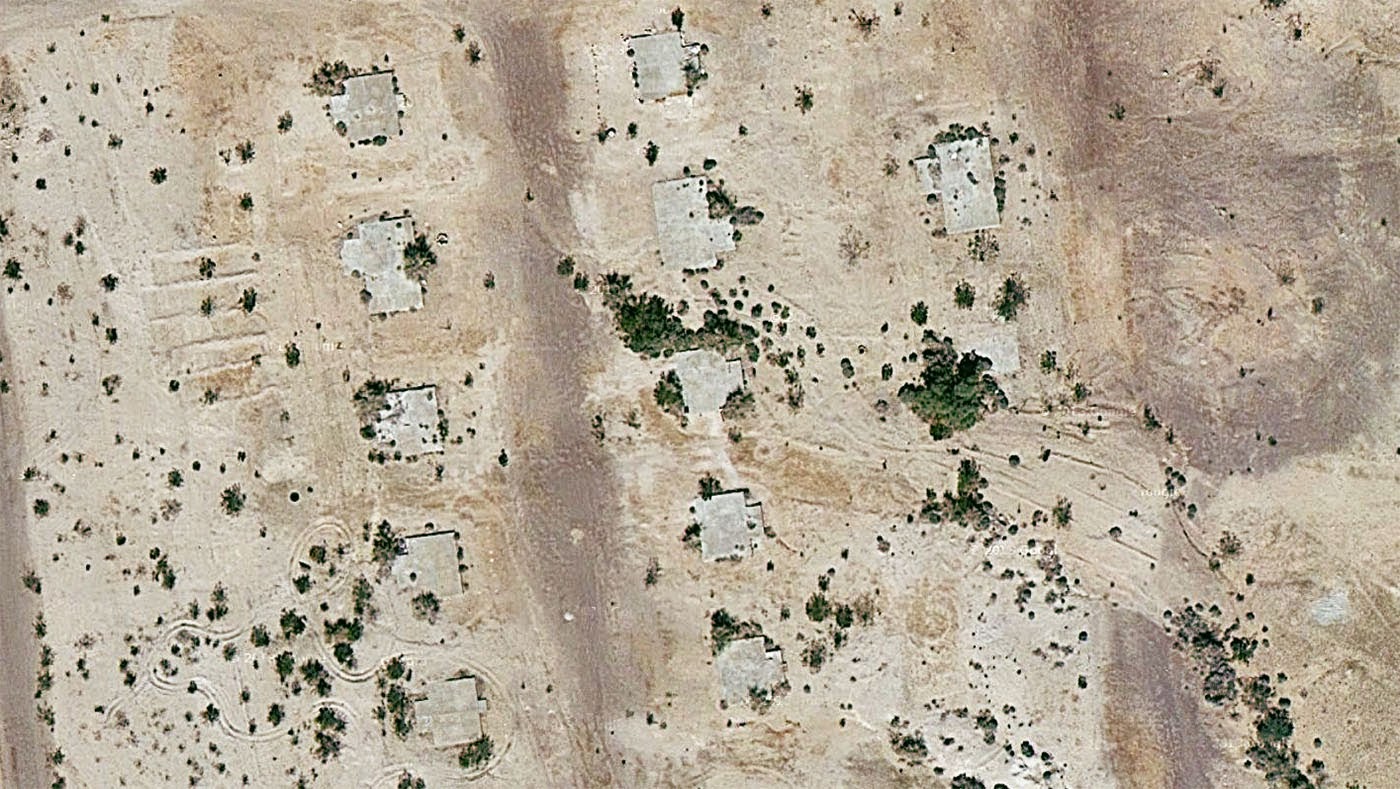 [Image: Midland, California, via Google Maps].
[Image: Midland, California, via Google Maps].
I’ve long been fascinated by the artificial snow industry—the notion of an industrially controlled climate-on-demand, spraying out snowflakes as if from a 3D printer, is just amazing to me—as well as with the unearthly world of mines, caves, and all things underground, but I had not really ever imagined that these interests might somehow come together someday, wherein fake glaciers and peaceful drifts of pure white snow were actually something scraped out of the planet by the extraction industry.
As if suggesting the plot of a deranged, Dr. Seussian children’s book, the idea that winter is something we pull from a mine in the middle of the California desert and then scatter over the warm Mediterranean cities of the coast is perhaps all the evidence you need that life is always already more dreamlike than you had previously believed possible.
(Very vaguely related: See also BLDGBLOG’s earlier coverage of California City).

I never knew how they made snow for those movies, thanks. Ever heard of the Virginia Smart Road? They can produce snow for road testing. I've never seen that, but they can make an impressive rain storm.
Hey Douglas – I hadn't! Thanks for the tip; I'll check it out.
It's always bazaar being on set for snow work. I work in the film industry in LA but came from the Midwest. it's so… strange being on set for a hot summer night and the whole Pasadena street corner is covered in white. Santa, Reindeer, the whole thing. Commercials are usually shot 4-6 months before they air so that puts us in production during some of the hottest parts of the year.
These days they use different types of snow for different effects. Snow just on the ground is usually this paper pulp stuff. It's so shredded it almost looks like cotton some times. Floating snow that is on camera is often a fine bubble substance that guys wearing leaf blower like backpacks walk around and shoot over the camera or talent. It dissipates nicely like the real stuff does once it lands. in the background and for large areas they roll out large white foam sheets. I've seen them fill whole yards with that stuff and then go back along the edges with the paper pulp.
I've seen some great looking sets and in my opinion,
these guys are the best. http://snowbusinesshollywood.com
Thanks for the blog Geoff. I always look foreward to the next post.
I used to do scenic work for a zoo in Florida that did an elaborate Christmas event. One of the main areas used several evaporative faux snow machines. It used to amuse me to see patrons so wrapped up in the illusion that they would try to catch a snow flake on their tongue and then make soap taste face.
I live in Quebec Canada — Snow in movies NEVER look like real snow.
Two things I would like to address.First off the gypsum mined in Midland its primary purpose was to be used in making wallboard also known as dry wall. The fake snow came secondary. I know a lot about Midland because a large part of my family grew up there. Next where did you get the idea Midland was intentionally burned down?. When in fact most of the buildings we’re moved to Blythe California and surrounding areas.Or just torn down. A lt of families were raised there. Water was non-existent in Midland and had to be brought in by tanker cars on the railroad. There were a commissary, schools ,Church and ball fields.
Hey, Don, thanks for the comment. The detail about the town being burned down came from the Center for Land Use Interpretation, a museum space and research group in Los Angeles that is usually very reliable. They say, “After the mine shut down in 1966, the town was intentionally burned to the ground.” But who knows. It looks like they might actually have been referring to this: “In 1973 the remaining 22 houses at Midland were burned down in a training exercise for Arizona and California firefighters.Today about all that is left is the chimney of the school, the pad for the tennis court and some of the foundations of the mill.” Either way, thanks for the comment.
One thing I have been trying to find out. There is a little girls grave in Midland it has a cement slab on top of it. I have seen pictures of it .I was put up for adoption in 1954 and my biological father has
d a daughter named Suzie that died of MD very young .Does anyone know if there is a name on the grave ?.I can be reached at dfinney2012@yahoo.com